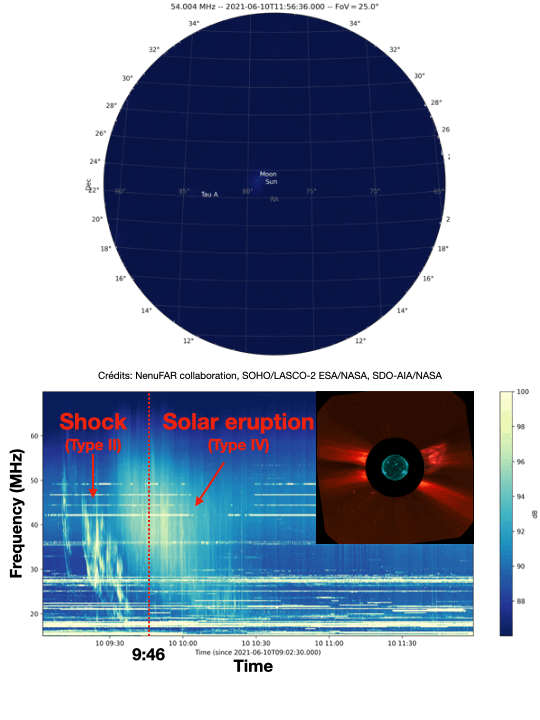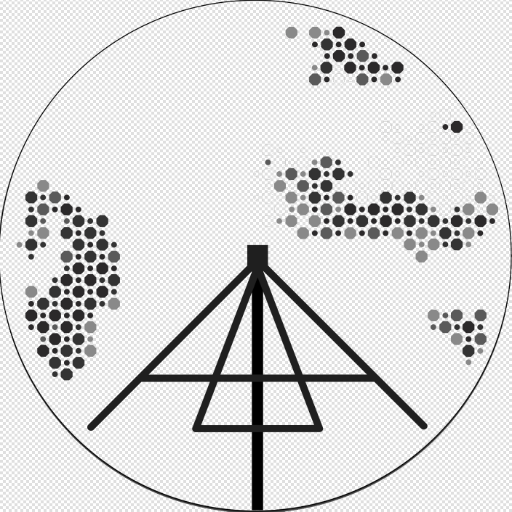
(bottom) dynamic spectrum showing two kind of solar burst seen in radio (the red line corresponds to the maximum of emission seen on the NenuFAR-TV). The frequency driting structure are characteristif of this kind of emission.
(insert) Composite image from LASCO-C2 and SDO-AIA (193Å) during the event.
The solar atmosphere regularly produces huge explosions in its atmosphere known as coronal mass ejections (CMEs). CMEs carry billions of tonnes of hot gas into the solar system at speeds in excess of millions of kilometres per hour. If this hot gas is directed towards the Earth it can cause damage to satellites or even electricity grids on the Earth’s surface. Hence astrophysicists study these events to gain a better understanding of the solar atmosphere, and also to better predict any damaging effects of these eruptions.
On 10th June 2021, as NenuFAR was observing a partial solar eclipse, the Sun produced a specular CME. These eruptions are often associated with energetic particles. The particles produce different forms of light, and are particularly bright at radio wavelengths. NenuFAR managed to observe, live, and for the first time, the transient radio signature of a shock wave driven by the CME and high-energy electrons trapped inside the eruption. By studying these radio emissions we can gain new insight into how CMEs interact with the solar atmosphere to produce energetic particles. This enables us to better forecast such ‘space weather’ events and help protect any vulnerable technology on Earth.
Authors: Eoin Carley, Alan Loh, Baptiste Cecconi, Julien Girard and the NenuFAR collaboration.

